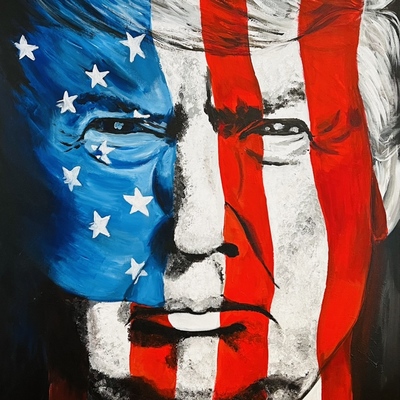Stay informed on the latest Truth Social posts from Donald Trump (@realDonaldTrump) without the doomscrolling. Consider it a public service for your mental health. (Why?)
- The United States has a significant and persistent Trade Deficit with Malaysia.
- Malaysia's Tariff and Non Tariff Policies and Trade Barriers are identified as the cause of this deficit.
- The trade deficit is a "major threat" to the U.S. economy and national security.
- Starting August 1, 2025, the U.S. will implement a 25% tariff on all Malaysian products imported into the United States.
- Goods transshipped to evade higher tariffs will be subject to the higher tariff.
- The 25% tariff is less than what is needed to eliminate the trade deficit.
- There will be no U.S. tariff if Malaysian companies manufacture products within the United States.
- Any new tariffs imposed by Malaysia will be added onto the 25% U.S. tariff.
The imposition of a 25% tariff on all Malaysian products, a significant manufacturing hub, starting August 1, 2025, represents a major trade policy shift. This could increase costs for U.S. companies importing from Malaysia, impact corporate earnings (especially for those in electronics and semiconductors), and potentially lead to higher consumer prices. The prospect of retaliatory tariffs from Malaysia would further exacerbate these impacts, creating considerable uncertainty for U.S. businesses with global supply chains.
The post describes a significant economic policy change impacting a bilateral trade relationship. While the language refers to a 'major threat to... National Security' in an economic context, it does not contain direct military threats or calls for armed conflict escalation. The risk is primarily economic and diplomatic, potentially straining relations between the two nations.
- Commodities: Gold (XAU) may rise as a safe-haven asset due to increased trade tensions and potential inflation from tariffs. Oil (WTI) could experience volatility due to global growth concerns. Industrial metals like copper may face headwinds if global manufacturing slows. Short-Term Watchlist: XAU/USD price action, any immediate market reaction to trade policy, potential for supply chain disruptions. Medium-Term Focus: Inflationary pressures from tariffs, global demand trends, and central bank responses.
- Currencies (Forex): The US Dollar Index (DXY) might initially strengthen as a safe-haven, but sustained trade disputes could eventually weigh on it. The Malaysian Ringgit (MYR) is expected to weaken against the USD. Other Asian currencies may also be affected by broader trade uncertainty. Short-Term Watchlist: DXY movements, USD/MYR, and other Asian currency pairs. Medium-Term Focus: Broader trade policy developments, impact on global growth, and central bank monetary policy divergence.
- Global Equities: S&P 500, Nasdaq, STOXX 600, Nikkei 225, and Hang Seng could face headwinds due to trade uncertainty, particularly sectors reliant on Malaysian imports or global supply chains (e.g., technology, semiconductors). Companies with domestic U.S. manufacturing or those benefiting from reshoring could see positive impacts. Short-Term Watchlist: Futures open, VIX spike, performance of tech/semiconductor sectors. Medium-Term Focus: Corporate earnings revisions, global GDP forecasts, and shifts in supply chain strategies.
- Fixed Income (Bonds): US 10Y and 2Y yields could initially fall as investors seek safety in U.S. Treasuries amid global growth concerns. Credit spreads may widen, especially for companies exposed to trade risks. Short-Term Watchlist: UST 10Y yield levels and credit default swap spreads. Medium-Term Focus: Fed's reaction to potential inflation from tariffs versus growth concerns, and overall global risk sentiment.
- Volatility / Derivatives: The VIX is highly likely to spike due to increased market uncertainty and trade tensions. Options positioning may reflect increased demand for protective puts. Short-Term Watchlist: VIX levels and the VIX futures term structure. Medium-Term Focus: Persistence of trade policy uncertainty and its impact on implied volatility across asset classes.
- Crypto / Digital Assets: Bitcoin (BTC) might initially act as a risk-off asset, potentially seeing inflows, but could also correlate with equity downturns if broader economic slowdowns occur. The long-term behavior will depend on evolving macro liquidity and regulatory environments. Short-Term Watchlist: BTC/USD price action and its correlation with tech stocks. Medium-Term Focus: Macro liquidity conditions, global risk appetite, and any regulatory responses to digital assets.
- Cross-Asset Correlations and Systemic Risk: Watch for signs of stress, such as equities and bonds selling off together, indicating potential liquidity crunch. Trade tensions can strain global financial systems. Short-Term Watchlist: MOVE index (bond market volatility) and high-yield credit spreads. Medium-Term Focus: Global trade flow reconfigurations, potential for wider protectionist measures, and central bank liquidity operations.
- Retail Sentiment / Market Psychology: The post could heighten retail investor anxiety regarding global trade and economic stability, potentially leading to cautious behavior or a flight to safety within their portfolios. It might also encourage investment in domestic U.S. manufacturing or sectors seen as beneficiaries of reshoring. Short-Term Watchlist: Social media trends regarding trade wars or specific company exposures. Medium-Term Focus: How trade policy influences long-term retail investment strategies and sector preferences.

